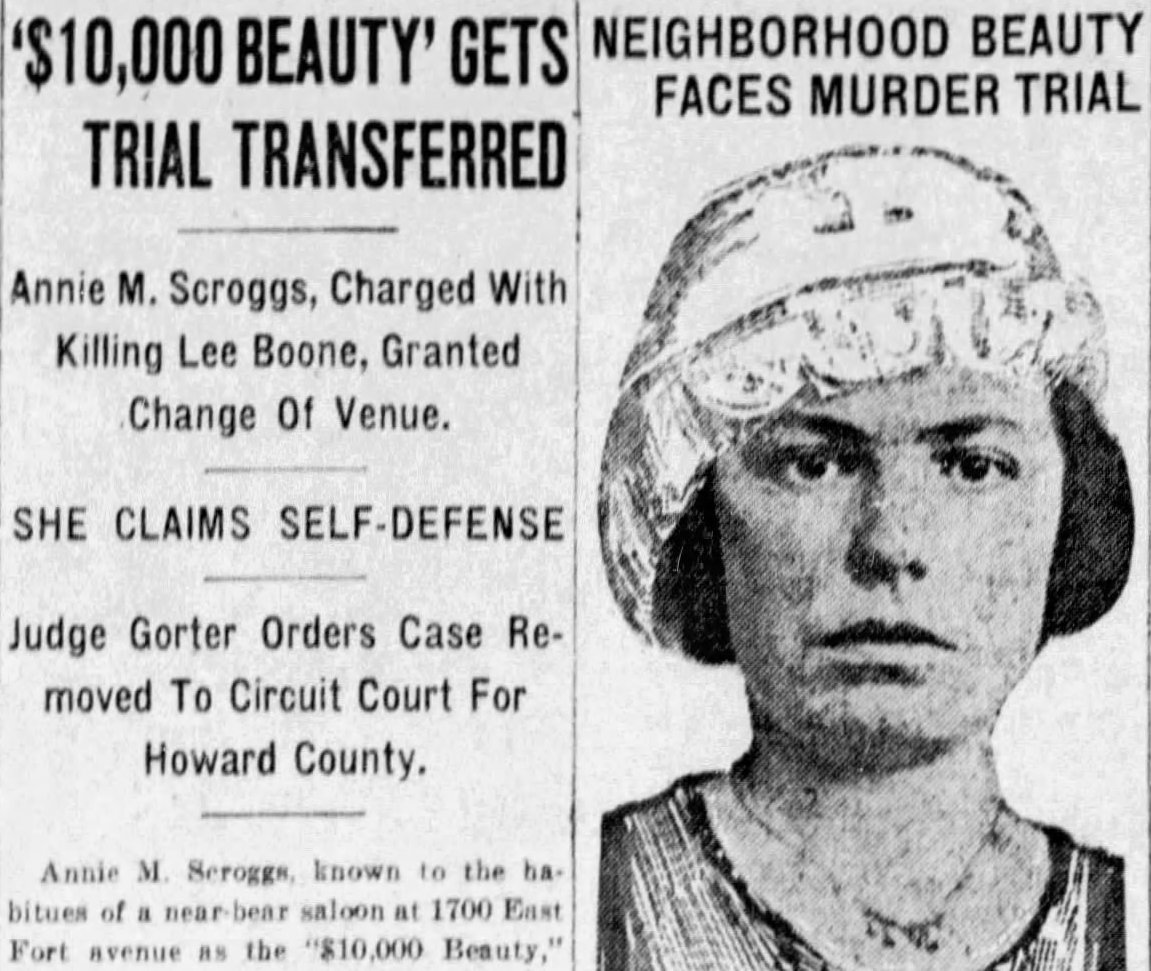First it was their mother in 1918. Then their father in 1919. In Gilmore City, Iowa the four adult Bonne children had lost both parents. Though they were grown, they were just starting out in their young adult lives.

Morris was a school teacher, George Jr. had moved to Minnesota, Rose married Frank Hartnett and lived in Fort Dodge.
The oldest was Leo.
It is probable that Leo was serving in the US Navy and was stationed on the Atlantic coast when his mother and father passed away. World War I came to an end in November of 1918, but for the young and single Leo, he found a Navy career in marine engineering. He moved into a Baltimore neighborhood on Locust Point, near Fort McHenry on the Patapsco River — the waterway that feeds into the Chesapeake Bay. With the shipbuilding industry in Maryland and Virginia at that time, it didn’t seem a stretch to imagine Leo building a successful life there.
Until he met Annie.
Anna “Annie” May Scroggs is my Great Grandfather’s 1st cousin. Here’s the connection: John Robert Scroggs and Almira Hart had five children.
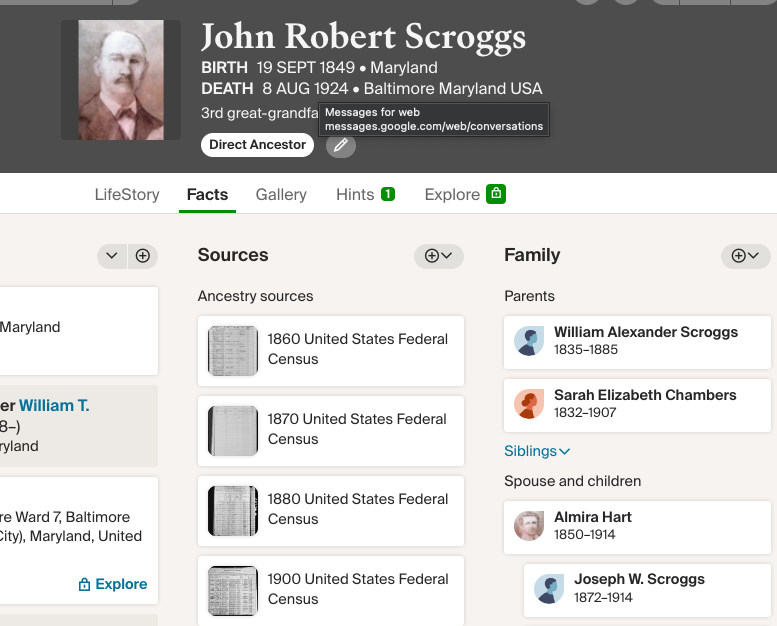
One of their sons, Harry Edward is my 2x great grandfather, while another son of John and Almira’s, Joseph W., is the father of Anna May Scroggs, our focus in this story.
So Anna “Annie” and I would be 1st cousins 3x removed.)
Annie lived at 1632 Clement Street on Locust Point with her mother, step-father, sister Agnes, and brothers John and Harry. Her father, Joseph had passed away when she was only 13 and her mother remarried a man named William Staap.
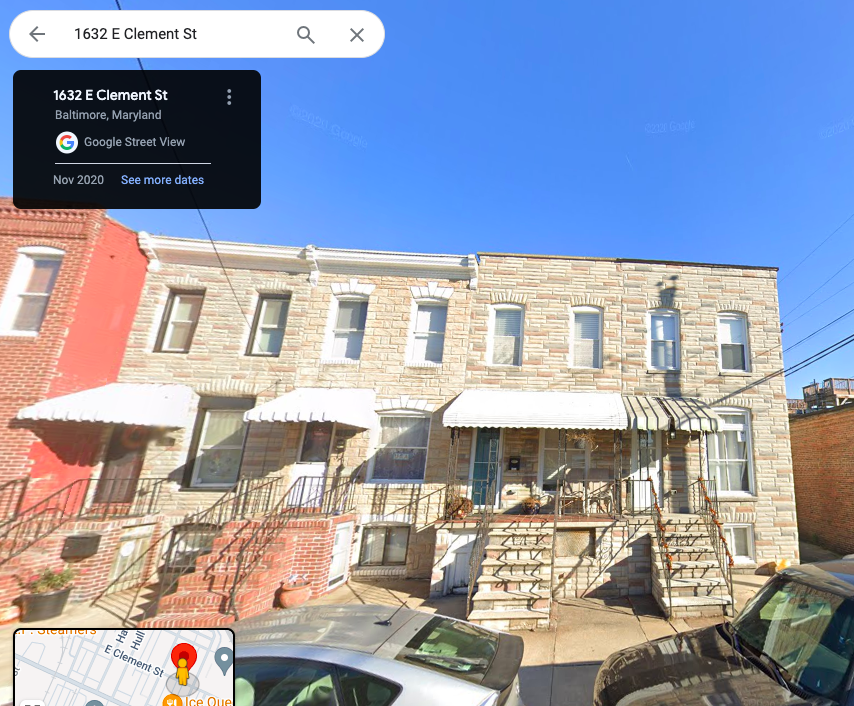
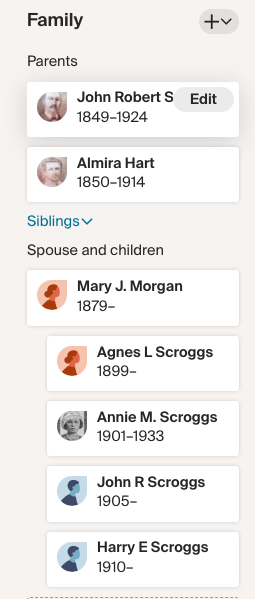
In 1921, Annie is a 20-year-old barmaid at a neighborhood eatery then called a “near-beer* saloon”. Mrs. Agnes Bannan was a recent widow who continued her husband’s saloon business through Prohibition, reinventing it as needed to appease both the law and the public. At this location on the corner of Andre Street and East Fort Avenue, she eked out a living by running the restaurant and renting out rooms to boarders. After all, she had three young boys to feed — ages 12, 10, and 7.
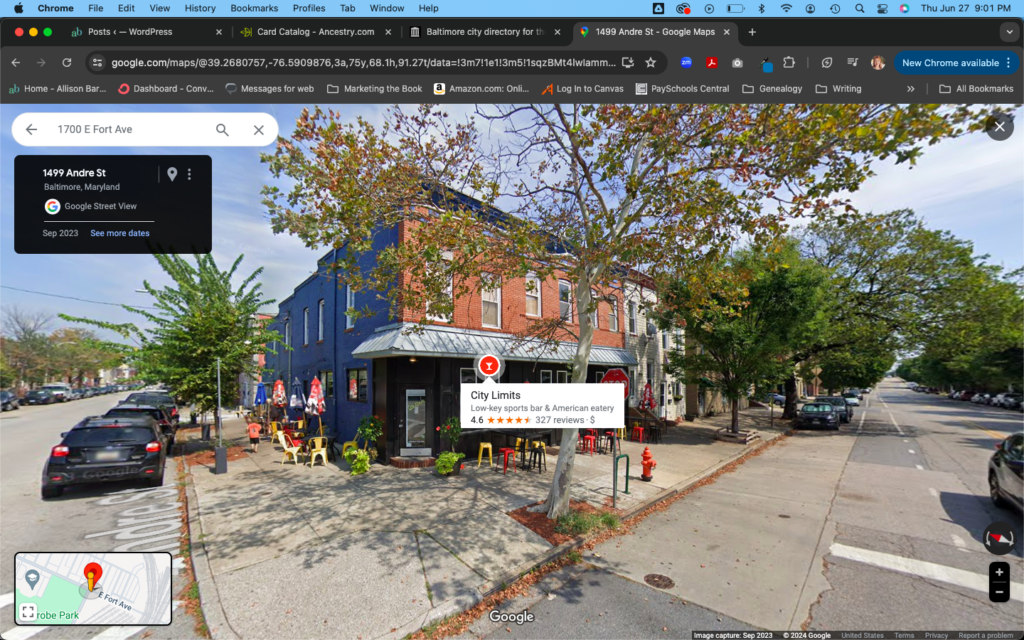
Today the building is still standing, now called City Limits Sports Bar.
*Colloquially dubbed “near-beer” fermented malt beverages containing very low alcohol was the only type of “beer” that could be produced and sold legally during the dark days of Prohibition in the United States (1919–1933). By law, near beer could not contain more than one half of one percent alcohol by volume. – description obtained from https://beerandbrewing.com/
By June of 1921 Leo Bonne started boarding at Mrs. Bannan’s place. It’s unclear if he or The Baltimore Sun got it wrong, but his age dropped nearly a decade from the records back in Iowa. But being younger may have its advantages, especially when he has his sights set on the young Anna Scroggs. Instead of being 17 years her senior, a 7 year age gap is reported.
Leo makes it quite clear that he intends on marrying her, and the summer weeks go by. Despite her refusals at his advances, he puts a deposit on 1534 Latrobe Park Terrace, the perfect home to give his future bride.
But in mid-August he’s getting impatient and desperate. He begins drinking heavily.
On August 31st things take a tragic turn.
Commits Suicide In Saloon Because of Love Affair — Leo Bonne Shoots Self After Woman Barkeeper Refused to Marry Him
Police reported that he shot and killed himself while sitting at a table in the saloon. When asked why she didn’t say yes to his marriage proposals, Annie simply replied, “Because I didn’t love him.” Fair enough.
– SEPTEMBER 1, 1921 edition of The Baltimore Sun


Articles from the Baltimore Sun shot out of the presses with the salacious story. “Accused of Killing Lover” and “Girl Who Confessed Killing Marine Engineer in Saloon Photographed at Bertillon Bureau”. But it was in the Philadelphia Inquirer that dubbed her the “$10,000 Beauty of South Baltimore”.
Earlier in the month, the coroner ruled it a suicide. But a request for a second investigation came from officials of the American Legion who knew Bonne as well as his sister Rose back in Iowa. Between suspicions that the angle of the gunshot would have been nearly impossible to self-inflict, and the fact that he came to Baltimore with “negotiable papers valued at about $12,000” he had inherited, there seemed to be cause to look at Annie and Mrs. Bannan again.
While questioning Annie this second time around, a lieutenant named Burns decided he would act out what would have likely happened in a possible struggle between Annie and Leo. She broke down and fessed up.
Crying, she admitted she had shot the gun, but it was in self-defense. She insisted to police that ever since he arrived in Baltimore he’d been begging her to marry him. She claimed he pointed a gun at her and asked her to marry him, saying he’d kill her unless she said yes. It’s unclear if that was a different time, or in the moments leading up to Leo’s death. They were in the kitchen and apparently instead of killing her, he insisted he would just marry her “the other way”. Annie claimed when he grabbed her and attempted to assault her, he dropped the pistol and she scrambled for it and immediately pulled the trigger.

Mrs. Bannan insisted she wasn’t in the saloon when it happened. She would also admit later the next year when taking the stand in court, that Annie asked her to “keep with the story that Leo shot himself” when talking to the police. She obviously had complied. The two women visited the body of Leo Bonne while arrangements to ship his body back to Iowa were being made. Mrs. Bannan said Annie should give Leo a goodbye kiss. She said “a kiss will drive him from your mind.” Sounds like a weird Irish old-wives tale. I’m not sure that it worked.
It must have surprised a few of the officers, because they were reported as saying that Miss Scroggs was “one of the shrewdest persons they have had to handle.” They had grilled her for 12-hours on the day of the incident and left without a confession.
A crowd had gathered at the station house to see the “Beauty of South Baltimore” so that when she came out to get into the patrol wagon they would get a glimpse. The article makes a point to say her only companion in the wagon was “a negro accused of larceny”. I would have been more interested to learn whether this person with her was male or female and what their name was, but okay.
The OCTOBER 9, 1922 edition of The Baltimore Sun flashes a headline after over a year of silence about her case (at least in the newspapers I checked).

$10,000 Beauty Gets Trial Transferred — Annie M. Scroggs Charged with Killing Lee Boone [Bonne] Granted Change of Venue — SHE CLAIMS SELF-DEFENSE — Judge Gorter Orders Case Removed to Circuit Court For Howard County — NEIGHBORHOOD BEAUTY FACES MURDER TRIAL
Finally, December rolls around — Annie has spent the last 14 months in jail. The trial is set for the 11th. There was a bit of frenzy surrounding the case, and once again the dramatic headlines ensued on the first day at Ellicott City Courthouse.
Locust Point Woman on Trial for Murder — Annie M. Scroggs “$10,000 Beauty” called to answer charge at Ellicott City — $10,000 Beauty is Placed On Trial — Annie M. Scroggs Faces Charge of Killing Lee Bonne At Locust Point
I’m still not entirely clear why she was called the $10,000 Beauty. Was that what her bail was set at? Or was it because of Bonne’s money and it was some inference that she may have killed him for his money?
Either way, the gossip mill was in full swing. In saloons around South Baltimore the talk was how they heard Annie say she’d kill him. It didn’t help that the prosecution’s Attorney O’Conor had announced (in court) that he’d proved that Miss Scroggs made the comment “I will kill him with a butcher knife as he lies asleep. No, I want his eyes to be open when I kill him.”
Then he brought up the kiss. How she “kissed his body in the casket waiting to be shipped to his people in the West”. Well, after hearing Annie’s reason why that was, I don’t know if that instance held much weight with proving she murdered him.
One article makes mention of how when court opened, “there were as many women spectators in the room as there were men.”

The next day in court, 20 people were gathered on behalf of Annie’s defense. Friends and witnesses described her as “a respectable, decent girl.” One odd detail reported on was that Annie’s sister Agnes heard the shot. Was she visiting? Living there? Living nearby the near-beer? Agnes told police she was told Leo shot himself and she began cleaning up the bloodstains.
After the character witnesses, it was Annie’s turn to take the stand. She was ready.
Here’s the order of events from her point of view:
- He attacked her in a room in the saloon
- Dragged her about the room several times and her clothing was partially torn from her body in her “efforts to free herself from his clutches”
- He grabbed her by the throat and after choking her he threw her against a cupboard that was against the wall of the room
- He threatened her, saying: “If you won’t marry me the right way, you’ll marry me the other way,” and attempted to assault her
- She knew there was a revolver in the cupboard drawer and secured it in case of further attack
- He grabbed her again and tussled with her for possession of the gun
- During the “scuffle it exploded” — he was shot in the head and died instantly
- She was unable to tell whether it was his finger or hers that pulled the trigger
When the prosecution gave their rebuttal, they of course accused Annie of lying and asserted that she shot him as he was walking away from her and not in the struggle she described. That she deliberately plotted to murder Leo Bonne.
Her appearance and “manner of answering questions showed confidence”, one article stated. The elderly all-male jury were “visibly impressed with her story”. They deliberated for a little less than two hours and to the prosecution attorney’s dismay, Anna Scroggs was found not guilty.
A “score of women applauded” for the outcome of the verdict. As she thanked the jury, Annie was seen “smiling for the first time since the trial began”.

But not everyone was happy with the outcome. An article in The Iowa Democrat the day following the end of the trial (December 14, 1922) reads:
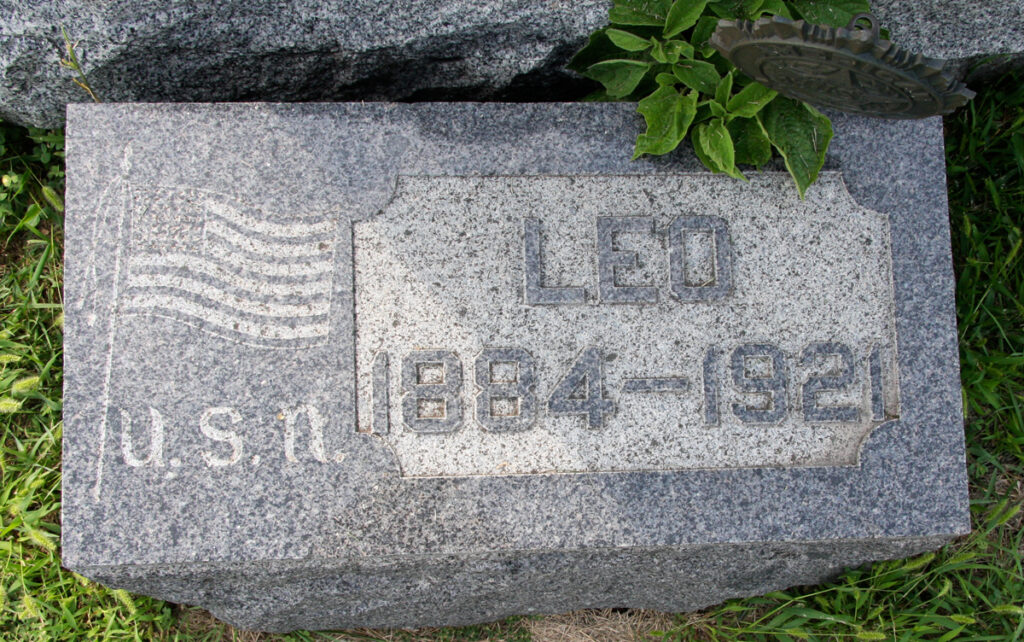
Leo Bonne’s Murderer Goes free in Baltimore
Annie M. Scroggs, the self-confessed murderer of Leo Bonne, the former Pocahontas County boy, was found not guilty by the jury in the trial of the case just finished at Baltimore, on Tuesday of this week. Mr. Bonne was murdered about a year ago last August by the woman, Miss Annie Scroggs, and the case has just been closed by the finding of the verdict of not guilty by the jury. The claim of the defendant was that she killed Bonne during a struggle when he attempted to assault her.
I’m sure over the next few years, there was still plenty of talk about the murder. In a few short months she married (and one assumes fell in love with) a man named Henry Kazmierski, a first generation Polish-American. In October of 1923, living at 632 East Clement Street in Baltimore, they welcomed a son, Henry William Kazmierski and that same year her older sister Agnes dies at the age of 24. Their daughter Evelyn was born in 1927 and by 1930, Henry was working as a stevedore for a steamship longshoreman business. Anna’s younger brother John also lived with the young family.

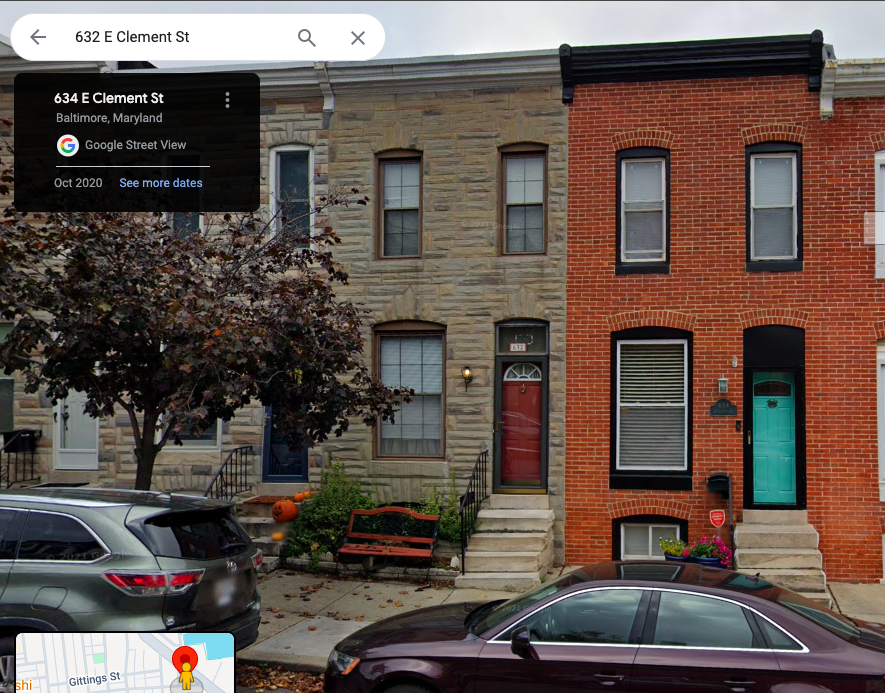
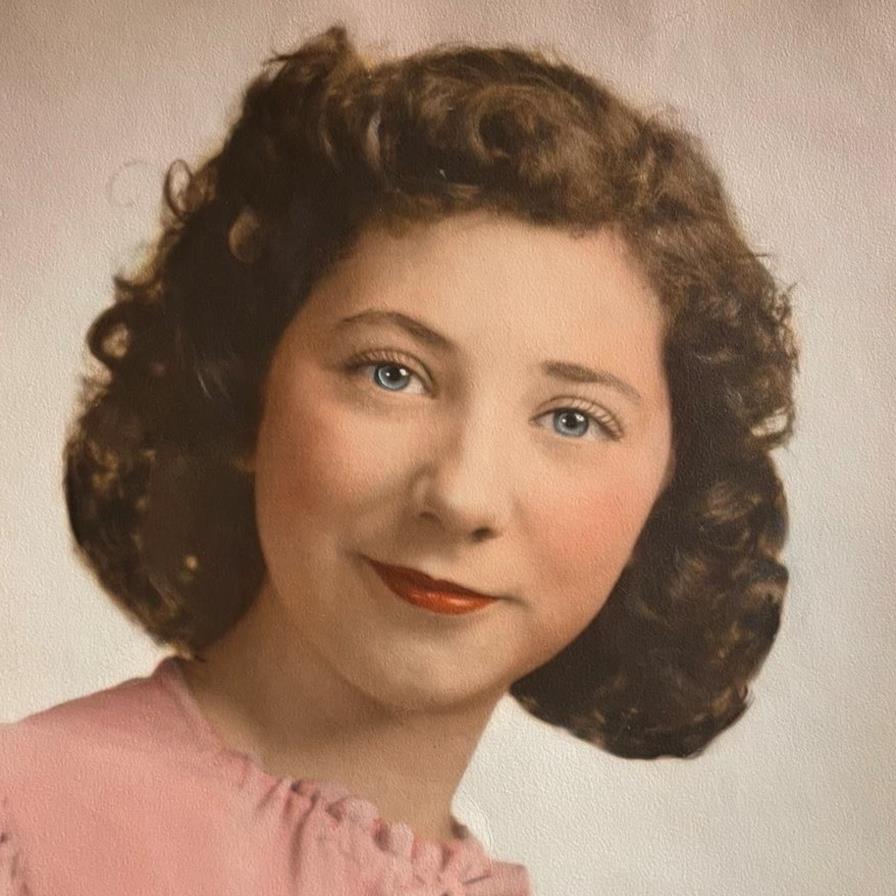
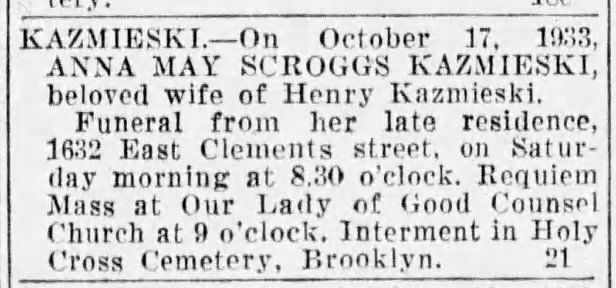
What was hopefully a happy married life was sadly cut short. Anna May Scroggs Kazmierski dies at the age of 32 on October 7, 1933. She is buried at Holy Cross Cemetery in Brooklyn Park, Anne Arundel County, Maryland. I haven’t found her death record or cause of death, and I’m obviously curious about the circumstances. This is all the information I have for now. I have to wonder how the events of the summer of 1921 changed the trajectory of her life, her personality, her relationships. And how Leo Bonne found himself in the predicament that ended up taking his life.
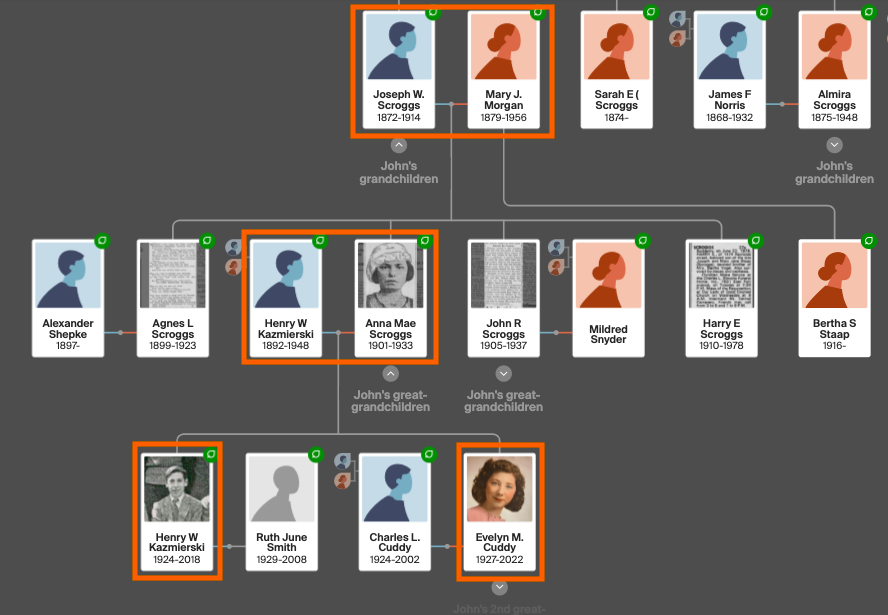
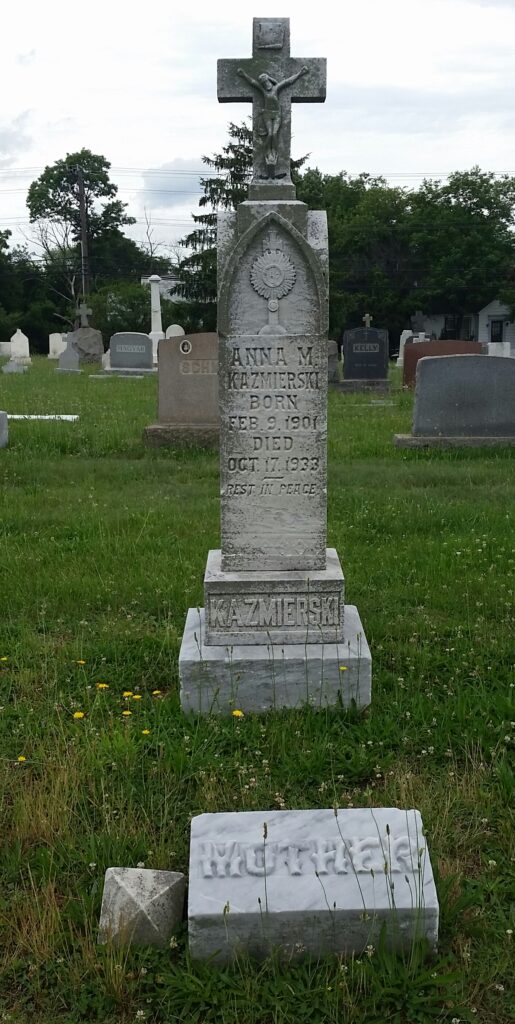
Don’t miss the next Get a Clue post.
Subscribe to my newsletter and get the latest article, practical
genie research hacks, updates about my book The Record Keeper, and more!
